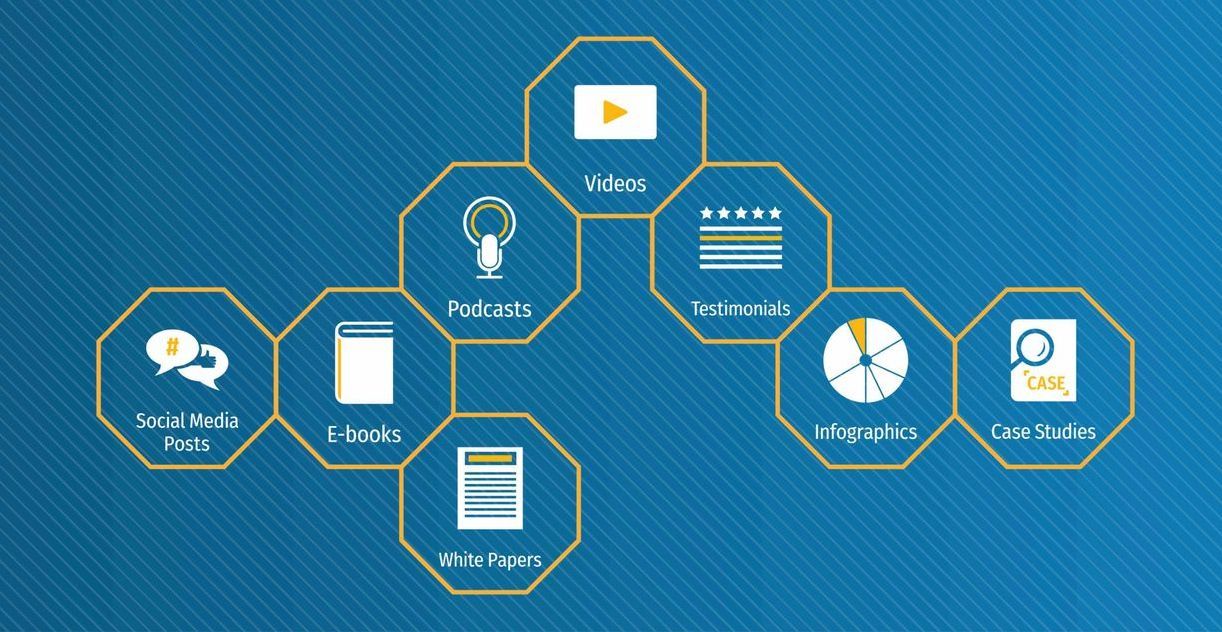12 Eye-Opening Ways to Repurpose Older Content for Content Marketing
If you’re interested in conquering content marketing this year, it’s important to focus on staying relevant while maintaining efficiency.
Digital marketers are increasingly recognizing the value of repurposing older content to enhance all their marketing channels.
Repurposing content not only saves time and resources but also maximizes the reach and impact of existing materials. Don’t let your old content languish anymore.

Why Repurposing Older Content Matters in 2025
- Content Overload and Competition
The internet is flooded with new content every second. The competition for audience attention will be fiercer than ever this year. Repurposing older content allows you to stand out without constantly creating new material from scratch. It helps you maintain a consistent presence while reducing the pressure to produce fresh content daily. - Sustainability and Efficiency
Creating high-quality content requires time, effort, and resources. Repurposing older content is a sustainable practice that maximizes the value of your existing work. It’s an efficient way to extend the lifespan of your content and get more mileage out of your initial investment. - Reaching New Audiences
Different audiences consume content in different ways (like millennials). By repurposing older content into new formats, you can reach people who may have missed your original material. For example, turning a blog post into a video or infographic can attract visual learners or those who prefer shorter, more digestible content. - SEO Benefits
Search engines favor websites that consistently update and refresh their content (cue the need for astable marketing tower that guides content, too). Repurposing older content with updated information, keywords, and links can improve your search engine rankings. This ensures your content remains visible and relevant in 2025’s marketing landscape. Also, let’s not forget that repurposed content can also be refocused for Conversion Rate Optimization (CRO) andengaging with customer touchpoints.
Benefits of Repurposing Older Content
- Saves Time and Money
Repurposing content is far less time-consuming than creating something entirely new. It allows you to focus on updating and reformatting rather than brainstorming and drafting from scratch. This saves both time and money, making it a cost-effective strategy. - Boosts Engagement
Older content that performed well in the past likely has timeless value. By repurposing it, you can reintroduce it to your audience and spark new engagement. For example, turning a popular blog post into a social media series can reignite interest and discussions. - Reinforces Key Messages
Repetition is a powerful tool in marketing. Repurposing content allows you to reinforce your key messages across multiple platforms and formats. This helps build brand awareness and ensures your audience retains important information. - Adapts to Changing Trends
Trends and technologies evolve rapidly. Repurposing older content gives you the opportunity to update it with current trends, statistics, and insights. This keeps your content relevant and aligned with the latest industry developments.
How to Identify Content Worth Repurposing
Not all content is worth repurposing. To get the most out of your efforts, focus on content that has already proven successful or has timeless value. Here are some tips for identifying content worth repurposing:
- High-Performing Content
Look at your analytics to identify blog posts, videos, or social media posts that received high engagement, traffic, or shares. - Evergreen Content
Focus on content that remains relevant over time, such as “how-to” guides, tutorials, or industry insights. - Outdated but Valuable Content
Update older content with new data, trends, or perspectives to make it relevant again. - Content with Multiple Angles
Identify pieces that can be broken down into smaller chunks or expanded into new formats.

Content Formats to Explore When Repurposing Older Content
Repurposing content doesn’t mean simply reposting the same material. It involves transforming it into new formats to suit different platforms and audiences. Below is a list of content formats you can explore when repurposing older content, along with a brief description of each:
1. Blog Posts
Turn older content into updated blog posts by adding new information, examples, or case studies. This is ideal for evergreen topics that remain relevant over time.
2. Infographics
Convert data-heavy content, such as statistics or research findings, into visually appealing infographics. Infographics are highly shareable and perfect for social media.
3. Videos
Transform blog posts, tutorials, or interviews into short videos or video series. Videos are engaging and cater to audiences who prefer visual content.
4. Social Media Posts
Break down longer content into bite-sized posts for platforms like Twitter, Instagram, or LinkedIn. Use quotes, tips, or statistics to create shareable snippets.
5. Podcasts
Repurpose written content into podcast episodes. This is a great way to reach audiences who prefer audio content and consume information on the go.
6. E-books or Guides
Compile related blog posts or articles into a comprehensive e-book or downloadable guide. This adds value for your audience and positions you as an authority in your field.
7. Webinars
Use older content as the foundation for a live or recorded webinar. This allows you to dive deeper into the topic and interact with your audience in real time.
8. Email Newsletters
Repurpose key points or insights from older content into email newsletters. This keeps your subscribers engaged and drives traffic back to your website.
9. Quizzes or Interactive Content
Turn educational or informative content into quizzes, polls, or interactive tools. This format is highly engaging and encourages audience participation.
10. Case Studies
Repurpose success stories or client testimonials into detailed case studies. This format is effective for showcasing your expertise and building trust with potential customers.
11. Slide Decks
Convert blog posts or reports into slide decks for platforms like SlideShare or LinkedIn. Slide decks are visually appealing and easy to consume.
12. Checklists or Templates
Transform step-by-step guides or tutorials into downloadable checklists or templates. These are practical resources that your audience can use and share.
Key Takeaways
The importance of repurposing older content in content marketing cannot be overstated. It’s a sustainable, efficient, and effective strategy that helps businesses stay competitive in an increasingly crowded digital space. By identifying high-performing or evergreen content and transforming it into new formats, you can reach new audiences, boost engagement, and reinforce your key messages.
The key to successful repurposing lies in creativity and adaptability. Experiment with different formats, platforms, and styles to see what resonates best with your audience. With the right approach, repurposing older content can become a cornerstone of your content marketing strategy, ensuring your brand remains relevant and impactful in the years to come.









